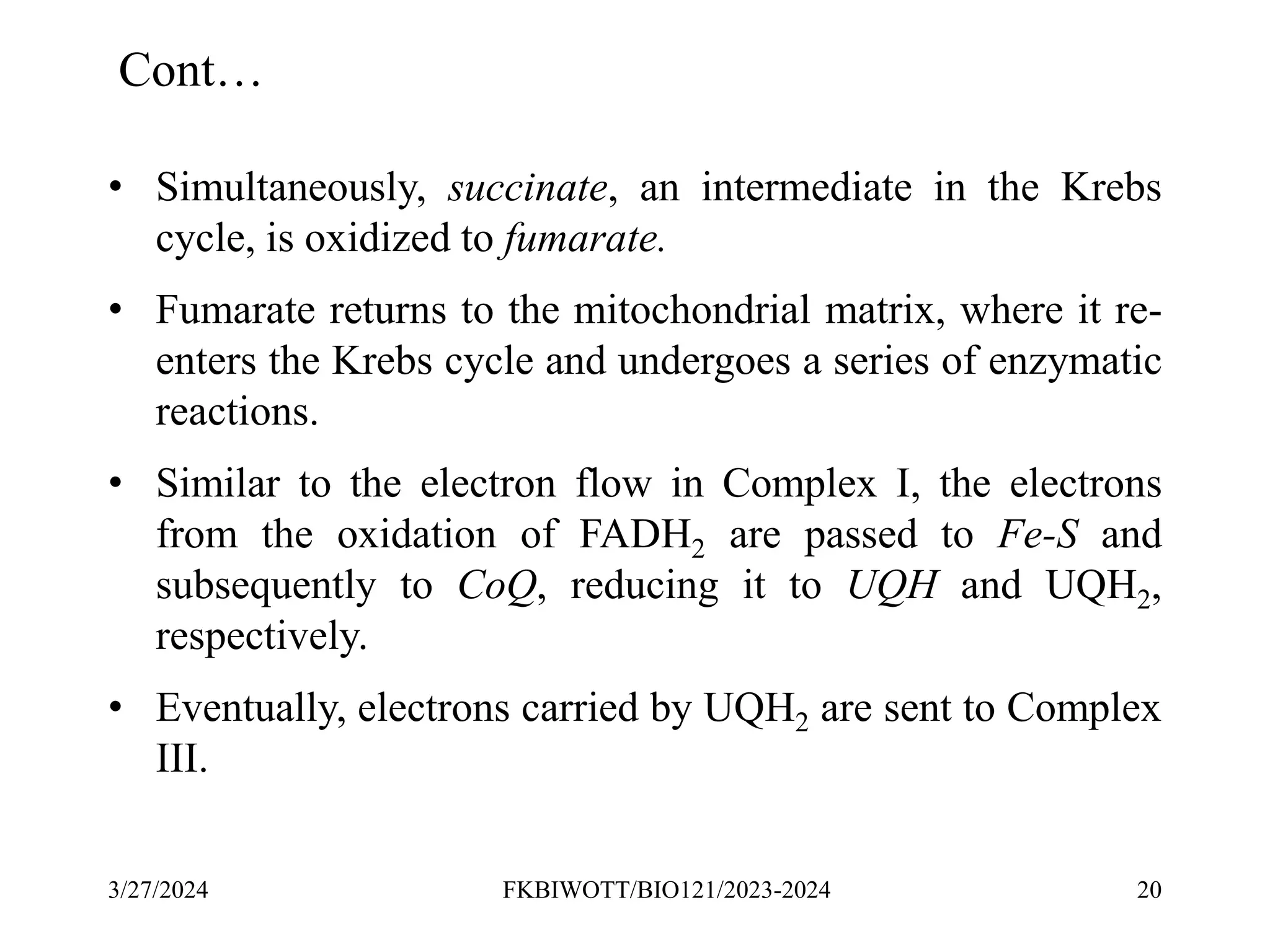This document provides an overview of high-energy compounds and the electron transport chain. It discusses how high-energy compounds like ATP are used to provide energy for cellular processes and how ATP is regenerated through oxidative phosphorylation and substrate-level phosphorylation. It also describes the components and function of the electron transport chain located in the mitochondria, including the four protein complexes that transport electrons and generate a proton gradient used to synthesize ATP.


























